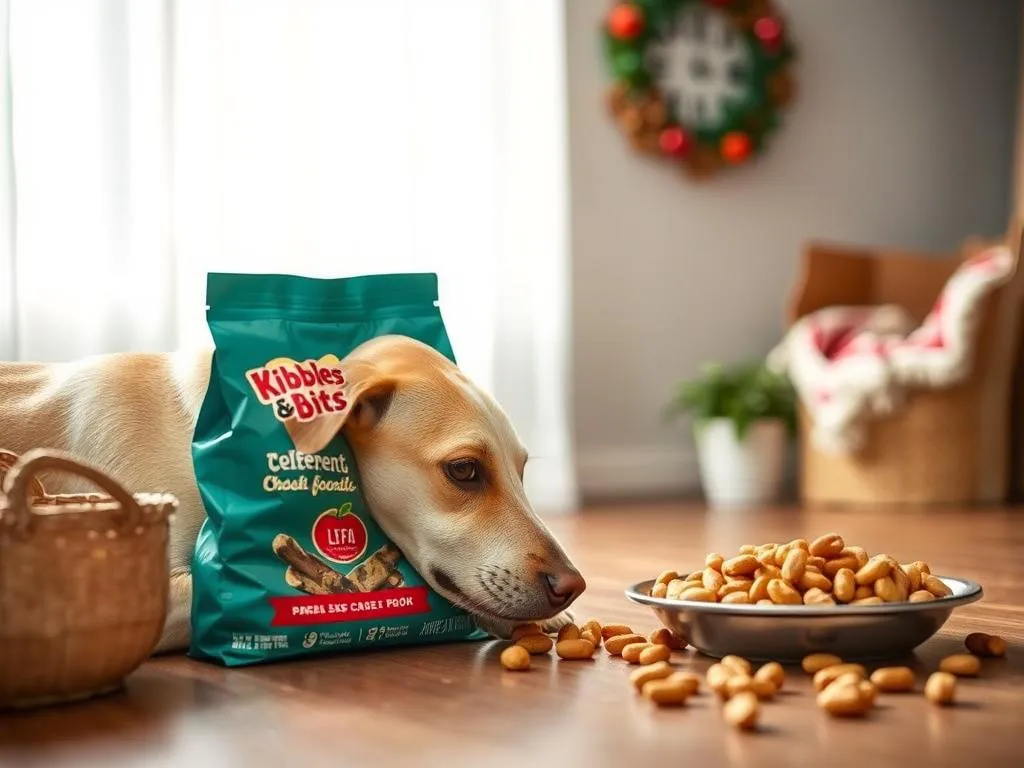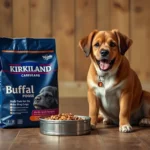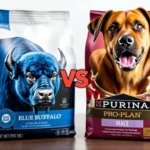
Introduction
Understanding the importance of dog nutrition is essential for pet owners who want to ensure their furry friends lead healthy, happy lives. Proper nutrition can significantly impact a dog’s overall well-being, behavior, and longevity. Among the myriad of dog food options available, Kibbles and Bits has carved a niche for itself as a popular choice among dog owners. This review aims to provide an in-depth analysis of Kibbles and Bits dog food, focusing on its ingredients, benefits, and potential drawbacks, while helping you make an informed decision for your canine companion.
Understanding Dog Nutrition
Importance of Balanced Diet for Dogs
Just like humans, dogs require a balanced diet to thrive. This includes an appropriate mix of proteins, fats, carbohydrates, vitamins, and minerals. Each nutrient plays a specific role in a dog’s health:
- Proteins are vital for growth, maintenance, and repair of tissues.
- Fats provide energy and support cell function.
- Carbohydrates are a source of energy and aid in digestive health.
- Vitamins and minerals support various bodily functions, including immune response and bone health.
An imbalanced diet can lead to health issues such as obesity, allergies, and behavioral problems, making it crucial to choose the right dog food.
Dog Food Types
When it comes to dog food, pet owners have several options, including:
- Dry kibble: Convenient, cost-effective, and promotes dental health.
- Wet food: More palatable and hydrating, but can be pricier.
- Raw diets: Focus on unprocessed foods but require careful handling.
- Homemade options: Allow for complete control over ingredients but can be time-consuming.
Kibbles and Bits fall into the dry kibble category, known for its convenience and long shelf life.
Overview of Kibbles and Bits
Brand History
Kibbles and Bits was introduced in the late 1980s and quickly gained popularity among dog owners for its unique combination of crunchy kibbles and chewy bits. The brand has evolved over the years, adapting to the changing needs of pet owners and the market while maintaining a strong presence in the dog food industry.
Product Range
Kibbles and Bits offers a variety of formulas designed to meet the specific needs of dogs, including:
- Kibbles and Bits Original: A classic formula for all life stages.
- Kibbles and Bits Small Breed: Tailored for the nutritional needs of smaller dogs.
- Special recipes: Options available for puppies, seniors, and weight management to cater to different life stages and health requirements.
Ingredients Analysis
Key Ingredients Breakdown
One of the most important aspects of any dog food is its ingredient list. Kibbles and Bits primarily uses the following ingredients:
- Meat sources: Typically chicken or beef, essential for protein.
- Grains: Such as corn and wheat, which can serve as energy sources but may also be fillers.
- Fillers: Ingredients like soy or artificial additives that may not provide substantial nutritional value.
While the primary ingredients provide a decent nutritional foundation, it’s crucial to consider the quality and source of these ingredients.
Additives and Preservatives
Many commercial dog foods, including Kibbles and Bits, contain artificial colors, flavors, and preservatives. These additives can enhance the appearance and taste but may pose health risks for some dogs, particularly those with sensitivities or allergies. Monitoring your dog for any adverse reactions when introducing new food is advisable.
Grain-Free Options
For pet owners concerned about grains in their dog’s diet, Kibbles and Bits offers grain-free formulations. These recipes cater to dogs with grain sensitivities and provide alternative carbohydrate sources. However, nutritionists often debate the necessity of grain-free diets, as grains can be a healthy component for many dogs.
Nutritional Profile
Guaranteed Analysis
Understanding the guaranteed analysis on dog food packaging is essential for assessing nutritional value. This section typically includes:
- Protein: Generally around 20-26%, depending on the formula.
- Fat: Ranges from 8-14%.
- Fiber: Approximately 3-5%.
- Moisture content: Usually up to 12%.
This analysis helps pet owners gauge whether Kibbles and Bits meets their dog’s specific dietary needs.
Comparison with Other Brands
When compared to other popular dog food brands such as Purina or Pedigree, Kibbles and Bits holds its own in terms of affordability and accessibility. However, premium brands often boast higher protein content and fewer fillers, which may be more appealing for health-conscious pet owners.
Benefits of Kibbles and Bits
Taste and Palatability
One of the standout features of Kibbles and Bits is its flavor variety. The combination of crunchy and chewy textures appeals to many dogs, making mealtime enjoyable. Customer feedback often highlights how dogs eagerly consume this food, which can be an essential factor for picky eaters.
Convenience and Storage
Kibbles and Bits is easy to store and serves as a convenient feeding option for busy pet owners. The resealable bags help maintain freshness, and the dry kibble can be left out without fear of spoilage. Additionally, the long shelf life makes it a practical choice for those looking to stock up.
Affordability
When considering dog food, price is a significant factor. Kibbles and Bits is generally more affordable than many premium brands, making it accessible to a broader audience. This value for money can be appealing, especially for families with multiple pets.
Potential Drawbacks
Health Concerns
Despite its benefits, there are some health concerns associated with Kibbles and Bits. Common issues include:
- Obesity: The high carbohydrate content and potential fillers can contribute to weight gain if not portioned correctly.
- Allergies: Some dogs may react negatively to specific ingredients, particularly grains or artificial additives.
Customer Reviews and Experiences
While many pet owners appreciate Kibbles and Bits, reviews often highlight recurring issues such as:
- Inconsistent quality: Some users report variations in kibble size and texture.
- Digestive issues: A minority of dogs may experience gastrointestinal upset after switching to this food.
It’s essential to consider these factors and monitor your dog’s health closely when introducing any new food.
Best Practices for Feeding Kibbles and Bits
Recommended Feeding Guidelines
To ensure your dog receives the right amount of nutrition, follow the feeding guidelines provided on the packaging. These guidelines typically suggest portion sizes based on your dog’s weight and activity level. Regularly adjusting portions based on your dog’s health and activity is crucial to maintain a healthy weight.
Transitioning to Kibbles and Bits
Transitioning your dog to Kibbles and Bits should be done gradually to avoid digestive upset. Follow these steps:
- Start with a mix: Begin by mixing a small amount of Kibbles and Bits with your dog’s current food.
- Gradually increase: Over a week, gradually increase the proportion of Kibbles and Bits while decreasing the old food.
- Monitor health: Keep an eye on your dog’s stool and overall health during the transition. Any signs of distress should prompt a consultation with a veterinarian.
Conclusion
In summary, Kibbles and Bits offers a variety of benefits, including taste, convenience, and affordability. However, potential drawbacks such as health concerns and varying customer experiences warrant careful consideration. By understanding your dog’s specific nutritional needs and consulting with a veterinarian, you can make an informed decision about whether Kibbles and Bits is the right choice for your canine companion.
FAQs
Is Kibbles and Bits suitable for all dog breeds?
Yes, Kibbles and Bits is designed to cater to various dog breeds and sizes, with specific formulas available for small breeds and different life stages.
How does Kibbles and Bits compare to premium dog foods?
While Kibbles and Bits is more affordable and convenient, premium dog foods often offer higher protein content and fewer fillers, which may be more beneficial for some dogs.
Can Kibbles and Bits lead to weight gain?
Yes, if not portioned correctly, the calorie content in Kibbles and Bits can contribute to weight gain, particularly in less active dogs.
Are there any recalls associated with Kibbles and Bits?
As with many commercial dog foods, Kibbles and Bits has faced recalls in the past. It’s essential to stay informed about any recalls and consult reliable sources for updates.
What are the best storage practices for Kibbles and Bits?
Store Kibbles and Bits in a cool, dry place in its resealable bag to maintain freshness. Avoid exposure to moisture and heat to prevent spoilage.









